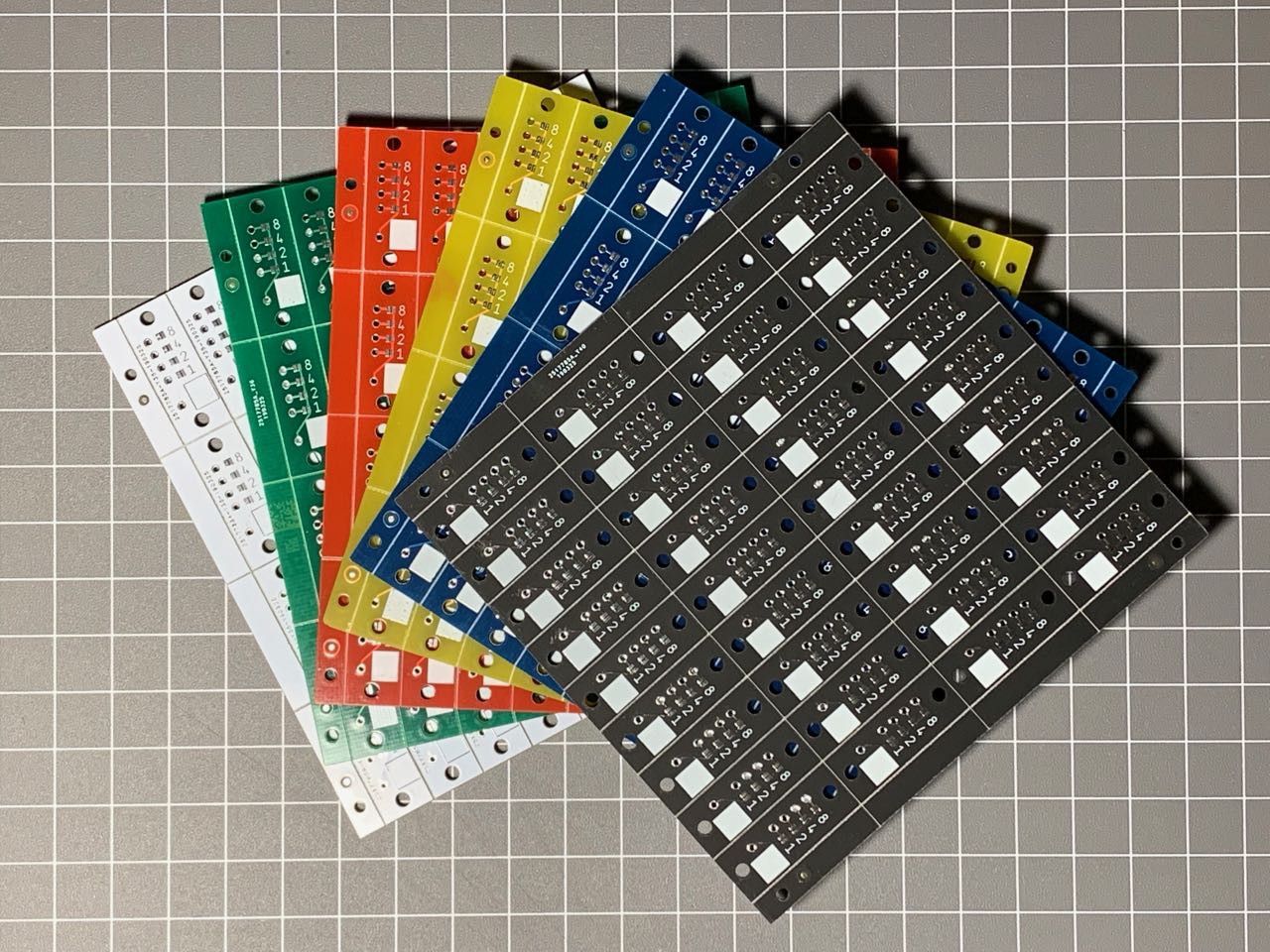Sometimes I am too clever for my own good. Or I try to be at least. For numeric input, I had been using BCD thumbwheel switches, which are kinda cool input devices, but they have two drawbacks - one, they are quite large compared to the modules, and two, they can be kinda expensive (and hard to source).

So I had the brilliant idea of ditching the thumbwheels and using simple "dongles" plugged into the value blocks. All I'd have to do is add some jumper pads to the digit PCBs, solder the jumpers to indicate an appropriate value, solder on the header pins and bingo!

Above are some of the resulting PCBs. If I use values from 0 to 9 for digits, that leaves 10 through 15 as "special" dongles that can represent variables and operators.
And it all works as expected. instead of two-digit values with thumbwheels, I now have a bunch of single digit plugins - to make a two-digit number, just plug in the two digits required. Easy-peasy!
Until you have to solder a bunch of the little suckers! 8^/

That's just a pile of four of each digit and they took me the better part of two hours to solder the jumpers and headers onto each one. How many will I need? A lot more than this - I don't think this is going to be a suitable solution for hand-manufacture. Then there's the storage and sorting of these little suckers. This prolly isn't going to be a sustainable solution once the prototypes land in the hands of small children.
I have enough thumbwheels for small prototypes, but I think I really do need to find a cheaper, but easier to build, option here.
Does anyone know of a small, cheap, 0-9 input switch that might be worth looking at? Or can you come up with some other (again - cheap) suggestion for entering values?
 Amos
Amos
Discussions
Become a Hackaday.io Member
Create an account to leave a comment. Already have an account? Log In.